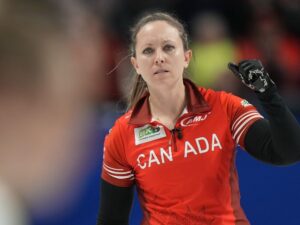
Polls have now closed in the majority of the country, with results already rolling in from Atlantic Canada and data expected soon from Quebec, Ontario, Manitoba, Saskatchewan, Alberta, Nunavut and Northwest Territories.
The early results being reported in this historic 36-day pandemic federal election show the Liberals taking an early lead, though Conservatives have picked up two seats in Atlantic Canada, a region that has been a Liberal stronghold over the last two federal elections.
As of 9:30 p.m. EDT, CTV News’ decision desk has determined that 18 Liberals and six Conservatives have been elected.
In British Columbia and Yukon, Canadians are still casting ballots to elect their next member of Parliament, and ultimately determine who will form the next federal government at a pivotal time in the pandemic.
There are 338 federal ridings up for grabs tonight. A party needs to win at least 170 seats to form a majority government, and based on pre-election-day polling, indications were that the race was tight and looking most likely to result in another minority government.
Heading into this race the Liberals held 155 seats, the Conservatives held 119 seats, the Bloc Quebecois held 32 seats, the NDP held 24 seats, the Green Party held two seats, there were five Independent MPs, and one vacancy.
Liberal Leader Justin Trudeau called the federal election on Aug. 15, putting the end to his nearly two-year minority Parliament, in search of a second majority win.
Trudeau set up his re-election bid as a chance for Canadians to have their voices heard about who they want to lead the country out of the fourth wave of COVID-19 crisis, and into a new era of considerable change.
Will his pandemic election gamble pay off? Or, will voters agree with Conservative Leader Erin O’Toole’s pitch that now is the time for change? Conservative Party officials signalled Monday evening that the election remains “too close to call,” in dismissing reporting that suggested they’d consider holding the Liberals to a minority as a win.
Looking to the other parties, will Bloc Quebecois Leader Yves-Francois Blanchet be able to hold on to enough support in his province to maintain third-party standing in the House of Commons? Or will the NDP, led by Jagmeet Singh, be able to cash in on a hopeful but aggressive campaign by picking up seats, putting them into a stronger opposition standing?
Will Green Party Leader Annamie Paul win her riding? And, will the People’s Party of Canada’s uptick in support translate to seats, or just enough to split the vote on the right?
One thing is for certain: It’s been a federal election like no other given COVID-19’s continued spread.
Between the ongoing pandemic and the active national conversation about mandating vaccinations, the outcome of this vote will inform how the next governing party proceeds in the fight against the virus and building a path towards addressing other key issues that arose on the campaign trail: housing affordability, childcare, and economic growth.
Because of COVID-19 public health restrictions, how Canadians are voting has changed in some ways from past elections. Nearly one million people voted by special mail-in ballots, and another 5.8 million took part in the four days of advance polls held earlier this month, an increase of 18.5 per cent compared to the 2019 election.
The tens of millions making their choice in-person today have been doing so while being asked to abide by certain COVID-19 protocols like physical distancing, sanitization, and masking regulations. This has resulted in longer lines than usual to get in to some polling places.
In addition to long lines and longer-than-usual wait times at polling stations, Elections Canada also reported a handful of disruptions at polling stations across the country that saw some sites in Ontario and Western Canada open late or have to be relocated. Some voters also had issues locating their polling place, which was exacerbated by a technical issue with an application on Election Canada’s website.
Right off the bat the campaign— the shortest possible election period under federal law— looked and felt different than any past election, because of the pandemic.
Travel itineraries were more pared-down, the main three travelling leaders’ tours used rapid tests daily in addition to requiring all aboard their busses or planes to be fully vaccinated, and instead of nightly jam-packed indoor rallies, virtual or outdoor events with elbow-bumps and masked selfies largely became the new norm.
There were three national debates, including one in English and one in French put on by a debates’ commission; parties pushed out their platforms and the costing of them at different times; candidate controversies hit every party; and campaigns sought to leverage social media and traditional television advertising to promote their leader and offer contrast to their opponents.
Now it’s Canadians’ turn and depending on how close key races may be, it’s expected that most ridings can be called by the end of the night. Though, it could take days to complete the counting of local mail-in ballots, meaning the final vote tallies won’t be known until Tuesday at the earliest.
Once the outcome is known, for all parties the next focus will be on the kickoff of the 44th Parliament, electing a Speaker, deciding on the future of hybrid sittings, and how they’ll position themselves on key issues as a new legislative agenda begins to take shape






